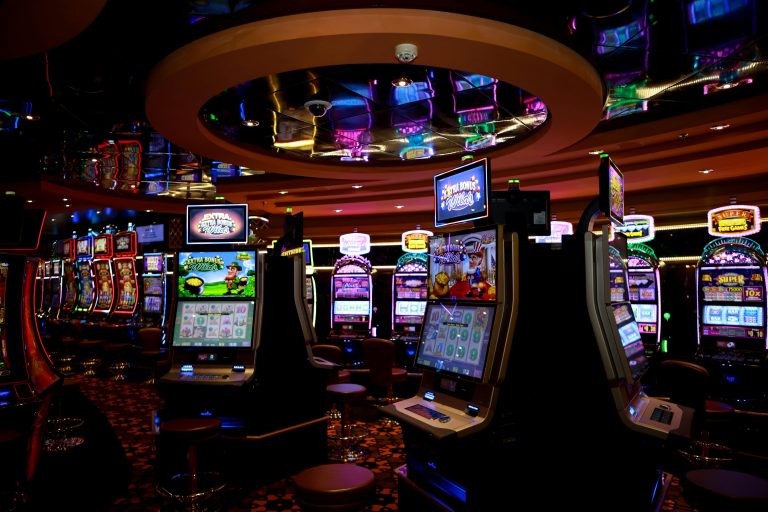
Family entertainment centers have been a staple in modern society for decades, providing a fun environment for families to spend quality time together. However, as times change and technology advances, these centers face new challenges in maintaining their relevance and appeal to the ever-evolving tastes of different generations. In response, family entertainment centers have transformed into multigenerational experience hubs, offering various activities and attractions that cater to all age groups. This shift has revolutionized the concept of relaxation, creating a unique and inclusive space for families to bond and create lasting memories. 88 Tactical explores the evolution of family entertainment centers and how they have become a hub for multigenerational experiences.
The Need for Transformation
Family entertainment centers (FECs) have been popular destinations for families to bond, relax, and have fun together. These establishments typically offer a variety of activities, such as arcade games, laser tag, go-kart racing, mini golf, and more. However, with consumers’ changing times and preferences, there has been a need for FECs to transform into multigenerational experience hubs.
One of the main reasons for this transformation is the desire for a more immersive and memorable experience. In today’s fast-paced world, families seek activities that provide entertainment and create lasting memories. This shifted focus from offering traditional games and attractions to incorporating elements such as virtual, augmented, and interactive experiences. Additionally, with the rise of social media and the need for shareable moments, FECs must adapt and offer unique and Instagram-worthy experiences to attract customers.
Adapting to the Changing Landscape
The traditional model of FECs, which focused solely on offering activities for children, is no longer sustainable. With the rise of nuclear families and an increase in dual-income households, it has become challenging for parents to spend quality time with their children. This has led to a shift towards multigenerational experiences where grandparents, parents, and children can all have fun together. FECs now offer activities catering to different age groups and interests, making it a destination for the whole family.
Moreover, with the rise of technology and digitalization, FECs have embraced advancements like arcade games with virtual reality integration, interactive projections, and mobile apps for enhanced experiences. These innovations attract younger generations and appeal to older generations who may not be as tech-savvy. By adapting to the changing landscape, FECs have become more inclusive and welcoming to people of all ages and backgrounds.
Creating a Multigenerational Experience Hub
To truly become a multigenerational experience hub, FECs must go beyond offering just entertainment. They need to provide a complete experience that caters to the needs and preferences of different generations. This can include various amenities such as cafes, restaurants, lounges, and outdoor spaces for relaxation and socializing. By incorporating these elements, FECs become more than just a place for fun; they become a destination where people can spend time together.
Furthermore, FECs can also offer educational and interactive activities that promote learning and skill development. This appeals to parents who want their children to learn while having fun and engages older generations interested in trying new things and expanding their knowledge. By offering diverse activities and experiences, FECs can attract a wider audience, making it an ideal destination for multigenerational groups.
Benefits of Transformation
The transformation of FECs into multigenerational experience hubs brings a multitude of benefits. Firstly, it allows FECs to remain relevant and competitive in the ever-changing entertainment industry. By adapting to consumers’ changing preferences, FECs can attract new customers and retain existing ones.
Secondly, this transformation creates opportunities for revenue growth by tapping into different target markets. By catering to a wider audience, FECs can increase their customer base. 88 Tactical says that incorporating amenities such as restaurants and cafes allows for additional sources of income while also providing convenience for families who want to spend the whole day at the FEC.
Challenges to Overcome
While transforming FECs into multigenerational experience hubs brings numerous benefits, it also comes with challenges. One challenge is maintaining a balance between traditional and modern elements. While incorporating new technologies and trends can attract younger generations, it is essential not to overlook the needs and preferences of older generations, who may prefer more traditional forms of entertainment.
Another challenge is the need for constant innovation and adaptation. The entertainment industry constantly evolves, and FECs must stay updated and offer new experiences to remain competitive. This requires a significant investment in technology, maintenance, and staff training.
Final Thoughts
The transformation of family entertainment centers into multigenerational experience hubs has revolutionized the concept of relaxation and fun for families. By adapting to changing times and preferences, FECs have become more inclusive and appealing to people of all ages. Incorporating technology, diverse activities, and amenities, FECs can provide a complete experience for families to enjoy together. While there are challenges to overcome, this transformation brings numerous benefits for FECs and their customers. 88 Tactical emphasizes that evolution has proven necessary and beneficial in the ever-evolving entertainment industry.






